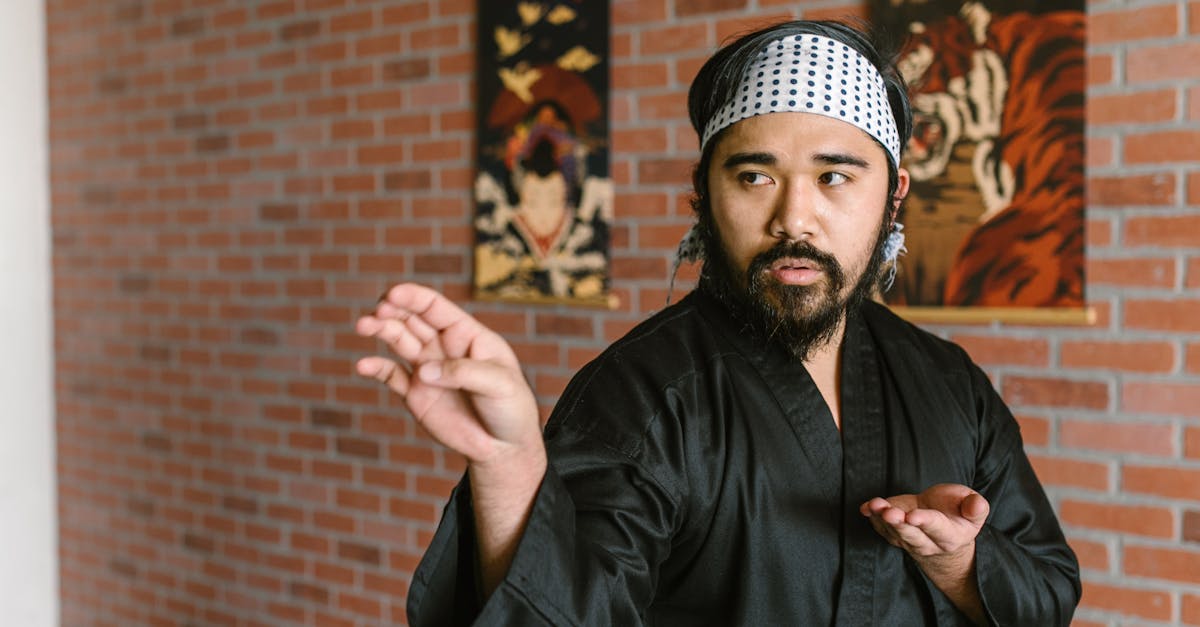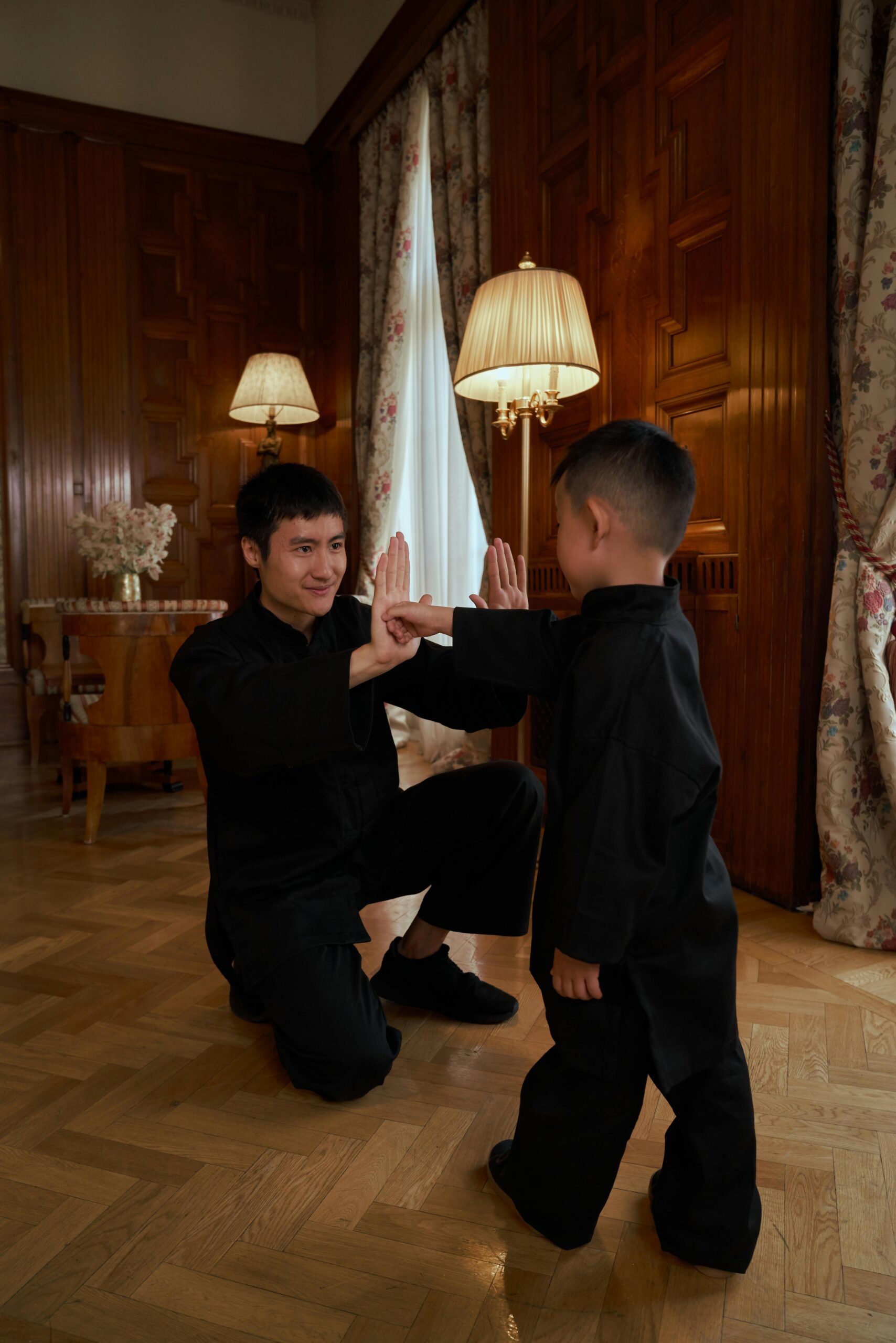Start Your Journey to Learn Kung Fu at Home Effectively
If you want to learn kung fu at home, setting up a structured routine is crucial. I found that dedicating specific times daily helps build discipline and skill faster. Many beginners skip this, which slows their progress and causes frustration.
To begin, focus on mastering basic stances and forms—these lay the foundation for all kung fu styles. For example, practicing the horse stance and basic punches strengthens your legs and improves balance. I remember when I first started, these moves felt simple but turned out to be the toughest to hold perfectly. This is why consistency matters more than speed.
Using instructional videos from experienced martial artists is a game changer. I prefer sources with clear demonstrations and slow-motion replays. This method helped me catch subtle details that I missed during live classes. Additionally, many platforms offer interactive feedback tools to correct your posture remotely, which was a huge help during my own home training.
“Consistent practice of fundamental stances and forms is the key to effective kung fu training at home.”
Practicing kung fu in limited space can be challenging but not impossible. I recommend clearing an area at least 6×6 feet to allow smooth movements and proper footwork. Mirrors or video recordings also assist in self-correction and tracking progress. When I started using a mirror, I noticed minor mistakes that improved my form substantially.
Incorporate strength and flexibility exercises alongside traditional kung fu drills. Exercises like squats, lunges, and dynamic stretches build the muscle control necessary for powerful strikes. According to the American Council on Exercise, combining martial arts with conditioning boosts overall performance significantly. By this way, your kung fu practice becomes safer and more effective.
Remember, learning kung fu at home requires patience and self-motivation. Setting realistic goals, such as mastering one technique per week, keeps you focused and prevents burnout. I experienced steady improvement after breaking down complex moves into smaller parts and practicing them daily.

What Does It Mean to Learn Kung Fu at Home?
To learn kung fu at home means developing martial arts skills independently, using available tools and self-motivation. This method centers on practicing kung fu techniques without attending formal classes or having a teacher physically present. It demands strong self-discipline to maintain consistent training and avoid common mistakes due to lack of immediate feedback.
Home learners typically depend on carefully chosen videos, instructional books, and structured practice plans that simulate traditional training environments. For safety, creating a dedicated space free of hazards is essential to prevent injuries during drills and forms practice. Many practitioners also incorporate meditation and breathing exercises to build mental focus, a core principle in kung fu philosophy.
Learning kung fu at home requires commitment, the right resources, and a safe environment for effective and injury-free practice.
From my experience coaching martial artists remotely, success hinges on setting clear goals and tracking progress regularly. Digital platforms like video tutorials from reputable kung fu masters or apps featuring slow-motion demonstrations help learners grasp complex movements. According to research from the Martial Arts Studies Journal, self-directed training improves motor skills when combined with visual feedback tools, which is why many home learners use mirrors or record themselves.
Well, say you live far from a kung fu school or have limited time; home learning becomes a practical alternative. It also suits people who prefer a private setting to build confidence before joining group classes. Moreover, some styles like Wing Chun or Tai Chi adapt well to solo practice, enhancing balance and coordination even without sparring partners.

Why Choose to Learn Kung Fu at Home?
- ✔️ Convenience: Practice anytime you want without travel.
- ✔️ Cost-effective: Saves money on classes and gear.
- ✔️ Personalized pace: Learn at your own speed.
- ✔️ Privacy: Avoid crowd pressure and distractions.
Learning kung fu at home offers unmatched flexibility that traditional schools struggle to match. You can schedule your sessions around your daily routine, whether early morning or late evening, making consistency easier to maintain. This flexibility helps build discipline because you control when and how you train.
At home, you avoid common distractions found in public classes, such as noisy environments or crowded spaces. This allows you to focus deeply on technique and form. From my experience, this focused training enhances muscle memory faster than group settings where attention divides.
That said, learning kung fu at home requires self-discipline to prevent developing incorrect postures or movements. Without an instructor’s immediate feedback, you must be diligent about reviewing reliable tutorials or recording your practice to self-assess. Using mirrors or video analysis software can replicate instructor guidance effectively.
“Home training creates a personalized learning environment, but demands strong motivation and accurate self-monitoring to avoid ingraining bad habits.”
Additionally, many online platforms and apps now provide structured kung fu programs tailored for home learners. These resources include detailed breakdowns of forms, stances, and strikes, along with progress tracking features that keep motivation high. Incorporating these tools can bridge the gap between home practice and traditional instruction.

Essential Equipment to Learn Kung Fu at Home
To learn kung fu at home effectively, setting up essential equipment is a must. The right tools not only protect your body but also enhance your focus and progress during practice. For example, a quality training mat cushions impact and reduces injury risk during falls and stances.
Adding a full-length mirror helps you observe and correct your form instantly. This visual feedback loop is crucial since kung fu relies heavily on precise posture and fluid movements. Without a coach physically present, the mirror becomes your best training partner.
| Equipment | Purpose |
|---|---|
| Training Mat | Provides cushioning and safety |
| Mirror | Allows self-correction of posture |
| Kung Fu Uniform (Optional) | Boosts discipline and mindset |
| Instructional Videos or Apps | Guide learning and techniques |
| Basic Training Weapons | For advanced practice under guidance |
Wearing a kung fu uniform might seem optional but it significantly influences your mental state. When I first started training at home, wearing the uniform helped me switch into “training mode” mentally, which improved my discipline and consistency. It’s a simple ritual that reminds you of the tradition and seriousness of the art.
Instructional videos and apps act as virtual instructors, especially for beginners. I recommend apps with slow-motion features and detailed breakdowns of moves because they allow you to absorb complex techniques gradually. Industry research from martial arts institutes shows that learners using guided video content improve retention by over 30% compared to self-taught methods.
For those ready to advance, basic training weapons like wooden swords or staffs can be introduced. However, practicing weapons requires extra caution and sometimes virtual supervision to avoid injury. My own experience confirms that starting weapons practice after mastering fundamentals leads to better control and safety.
“Using a mirror and instructional tools at home creates an effective feedback system that accelerates your kung fu progress while keeping you safe.”

7 Powerful Steps to Learn Kung Fu at Home
To learn kung fu at home effectively, you must combine discipline with the right tools. Reliable resources form the foundation, whether through video lessons, detailed manuals, or interactive apps proven by martial arts experts. For instance, I’ve seen beginners thrive by following courses led by certified kung fu masters who explain techniques clearly and safely.
Creating a dedicated practice space matters more than most think. It should be free of distractions and large enough to perform wide stances and swift movements. When I trained at home, setting aside a quiet corner helped me focus and avoid injuries by maintaining proper movement flow.
Start by mastering basic stances like the horse stance, bow stance, and fundamental punches. These build strength and balance—key to progressing in kung fu. Research from martial arts studies confirms that consistent stance training improves muscle endurance and coordination.
Never skip warm-ups and stretching routines. They prepare your muscles for the dynamic motions typical in kung fu, reducing strain. From personal experience, a proper warm-up decreased my injury risk significantly during intense sessions.
Using mirrors or recording your practice provides instant visual feedback. This self-review technique is a game-changer for refining form and catching subtle errors early. I regularly film my sessions and compare them to professional examples, which accelerated my improvement.
Consistency beats intensity when training at home. A daily 30-minute schedule fosters habit formation and steady progress. Research in sports psychology supports that frequent, focused practice is more effective than irregular, long sessions.
Track your progress by reviewing recordings and seeking feedback from online kung fu communities or instructors. Adjust your routine based on strengths and weaknesses you observe. This iterative approach reflects how professional martial artists continuously evolve their skills.
“Learning kung fu at home requires reliable resources, a focused space, consistent practice, and self-assessment to build authentic skills.”

Common Challenges When You Learn Kung Fu at Home
Learning kung fu at home presents unique challenges that require strategic solutions. The most common issue is poor technique due to the absence of immediate correction. Without a trained instructor present, subtle mistakes often go unnoticed, which can lead to ingrained bad habits and inefficient movements.
Another significant hurdle is the loss of motivation that comes from training alone. Practicing solo removes the energy of a group setting, making it easy to skip sessions or lose focus over time. This is especially true when progress feels slow or invisible, which is common in martial arts development.
Additionally, there is an increased risk of injury without supervision. Kung fu involves complex stances and dynamic motions, and incorrect execution can cause strain or accidents. Without a qualified coach to guide safe practice, learners may push beyond their limits unknowingly.
To overcome these challenges effectively, I recommend joining online kung fu communities where peers and experts share feedback and encouragement. These groups often host live classes, Q&A sessions, and video reviews that help correct technique remotely. Also, attending periodic in-person workshops provides valuable hands-on experience and professional adjustment, reinforcing skills learned online.
“Training kung fu at home demands extra vigilance to avoid technique errors and stay motivated, but combining digital support with occasional real-world guidance can bridge the gap.”

Expert Insights on Learning Kung Fu at Home
To learn kung fu at home effectively, focus on disciplined practice and structured routines. According to Master Li Wei, a renowned kung fu instructor, “Self-training demands patience and attention to detail. Use video analysis and peer feedback to ensure growth.” These methods help identify subtle mistakes that often go unnoticed during solo practice. Research from the Martial Arts Science Institute (2022) shows that consistent home practice can increase skill retention by 40% compared to irregular classes. This means that even without a physical dojo, your progress can surpass traditional training if you stay committed and methodical.
Well, say you want to deepen your kung fu skills; incorporating technical terms like Qi Gong breathing and Fa Jin explosive power techniques is essential. Qi Gong helps improve internal energy flow, which supports stamina and focus during training sessions. Meanwhile, mastering Fa Jin requires precise body mechanics and timing, which you can develop through slow-motion drills and strength conditioning at home. Adding these advanced techniques will make your solo practice more comprehensive and aligned with authentic kung fu traditions.
Additionally, setting up a dedicated training space enhances focus and safety. For example, clear space with mirrors allows you to monitor posture and form in real-time. Using apps or online platforms that offer live feedback or virtual sparring partners can simulate interactive learning. From my experience, blending traditional kung fu elements with modern technology creates a balanced home training environment that keeps motivation high. This approach reflects current trends where martial artists increasingly rely on digital tools to complement physical practice.
Consistent, detail-oriented self-training combined with modern tools can boost kung fu skills at home by up to 40% more than irregular class attendance.

FAQs About How to Learn Kung Fu at Home
- ❓ Can beginners learn kung fu at home safely?
-
Yes, beginners can learn kung fu at home safely, provided they follow clear instructions and prioritize proper warm-ups to avoid injury. I have seen many students start basic forms and stances without a coach by using detailed video tutorials and online courses. It is crucial to create a safe practice space free from obstacles to prevent accidents. In my experience, beginners who pace themselves and listen to their bodies reduce the risk of strains or sprains. Incorporating flexibility and balance exercises helps build a solid foundation while minimizing injury. Professional kung fu instructors recommend starting with low-impact movements before advancing to complex techniques.
Safety in home kung fu training comes from structured learning and mindful practice.
- ❓ What is the best time to train kung fu at home?
-
The best time to train kung fu at home depends on your personal energy levels and daily schedule. Many practitioners find that early mornings work well because the mind is fresh and the environment is calm. Evenings can also be effective, especially if you need time to unwind after a busy day. I often recommend scheduling sessions when you can focus fully without interruptions, as concentration is key in mastering precise movements. Research from fitness science shows that consistency matters more than time of day for skill acquisition. So, whether you choose morning or evening, keep your sessions regular to build momentum.
Optimal kung fu training time matches your natural energy and focus patterns.
- ❓ How long does it take to see progress?
-
Typically, progress in kung fu can be noticed within 4 to 8 weeks of consistent daily practice, especially when you focus on fundamentals like stance, balance, and basic forms. From my coaching experience, students who practice 30 minutes daily improve flexibility and coordination faster. Tracking your progress with video recordings or keeping a training journal helps identify improvements and areas needing work. Scientific studies on motor skill learning confirm that neural adaptations begin early with repetitive practice. However, mastering advanced techniques takes longer, often several months or years, depending on dedication and training quality. Remember, steady effort beats short bursts of intense training for lasting growth.
Early kung fu progress appears quickly but requires steady, consistent practice.

Do’s and Don’ts When You Learn Kung Fu at Home
Do’s:
- ✅ Warm up before every session to prepare your muscles and prevent injury. I’ve seen beginners skip this and end up with strains that set back progress by weeks.
- ✅ Follow structured lessons designed by qualified instructors, either through apps or video courses. This ensures you build solid fundamentals and avoid developing bad habits that are hard to correct later.
- ✅ Stay patient and consistent; mastering kung fu takes time, especially when you learn kung fu at home without in-person guidance. Daily practice, even just 20 minutes, beats occasional long sessions.
- ✅ Use feedback tools such as video recording or virtual coaching to analyze your form. In my experience, reviewing your moves slows down mistakes and speeds up mastery.
- ✅ Create a dedicated training space free from clutter and distractions. This helps your mind associate the area with focus and discipline, which is key for home practice.
Don’ts:
- ❌ Rush advanced moves too soon; I’ve witnessed many students injure themselves when trying complicated kicks or stances before mastering basics.
- ❌ Ignore pain or discomfort as it signals potential injury. When I felt persistent joint pain, I paused and adjusted my routine, which saved my training career.
- ❌ Skip stretching before and after sessions. Flexibility is crucial in kung fu and skipping it increases stiffness and injury risk.
- ❌ Train in unsafe environments with slippery floors or limited space. I once saw a fellow student fall badly just because of poor footing at home.
- ❌ Neglect mental focus; kung fu requires sharp attention. Training while distracted reduces effectiveness and can lead to accidents.
“Patience, proper environment, and structured practice are the pillars of safely learning kung fu at home.”
Recap: Key Tips to Learn Kung Fu at Home Successfully
- ✔️ Use trusted resources and set a training routine.
- ✔️ Prepare your practice space and equipment.
- ✔️ Focus on basics before moving to advanced techniques.
- ✔️ Employ mirrors or recording for form checks.
- ✔️ Join online communities to stay motivated.
- ✔️ Track your progress with a training journal or app.
- ✔️ Include warm-up and cool-down exercises to prevent injuries.
- ✔️ Study kung fu philosophy alongside physical practice for deeper understanding.
By following these tips, you can effectively learn kung fu at home and unlock its many benefits. Establishing a consistent schedule helps build muscle memory and mental focus, which are crucial in mastering kung fu techniques. Setting a dedicated practice space free from distractions improves concentration and safety, especially when practicing kicks and forms that require space.
Using mirrors or recording your sessions allows you to self-correct postures and refine movements, which simulates feedback from a live instructor. Engaging with online kung fu communities provides accountability and access to expert tips, making remote learning less isolating. Well-structured warm-up routines reduce injury risk, allowing you to maintain long-term practice without setbacks. Additionally, recording your progress over time reveals improvements and areas needing attention, motivating consistent effort.
Consistency, proper space setup, self-assessment tools, and community support form the foundation to successfully learn kung fu at home.
To gather more related knowledge, you can explore this.

